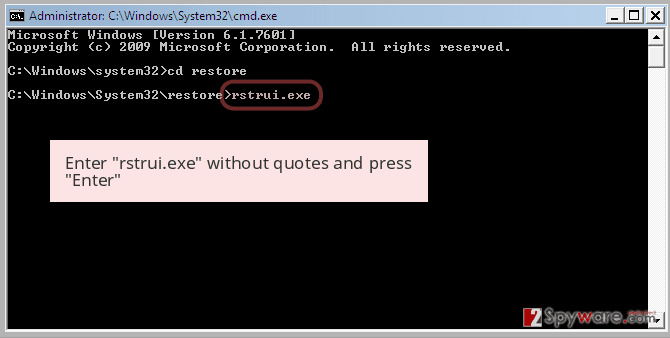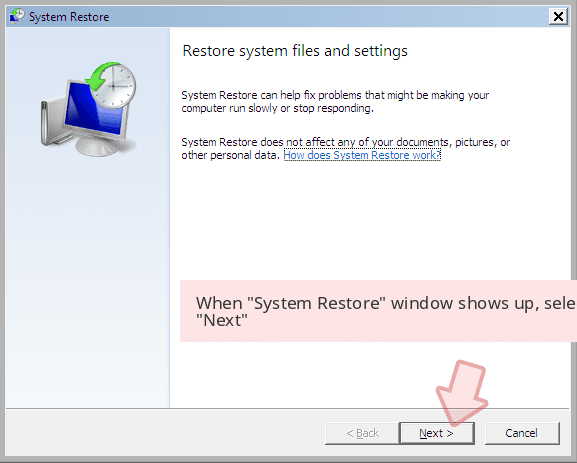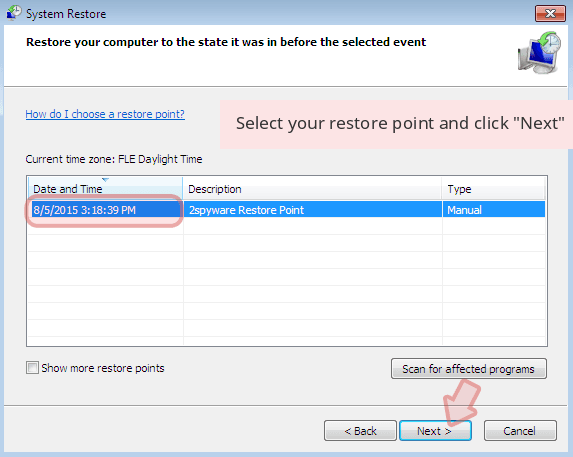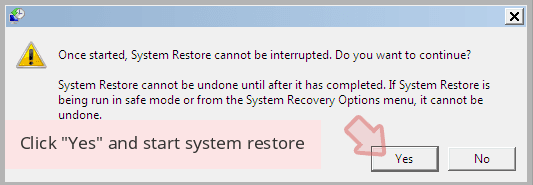Nhtnwcuf ransomware / virus (Decryption Methods Included) - Tutorial
Nhtnwcuf virus Removal Guide
What is Nhtnwcuf ransomware virus?
How dangerous is Nhtnwcuf ransomware virus?
The appearance of the Nhtnwcuf ransomware should encourage many computer users to backup their files. If you haven’t encountered this cyber threat yet, you know what to do[1]. Nevertheless, the developers of the virus promise to provide necessary decryption software and key in exchange for one bitcoin; it’s just a lie. The ransomware does not simply encrypt files. It damages them by overwriting them with garbage bytes. It means that there’s any other way to restore files than to use data backups. Thus, Nhtnwcuf virus might cause irreparable damage. Once it sneaks inside the system, it starts data encryption procedure that takes only a few minutes. The virus aims at the most popular file types and databases and appends .mkf, .ije or .nwy file extensions. Since then, people cannot open and use their documents, pictures, and other records. However, they might find !_RECOVERY_HELP_!.txt file that includes explanation what have happened and how to solve this issue. Cyber criminals inform that Nhtnwcuf removal with any antivirus program won’t help to restore encrypted files. Unfortunately, they are right. But it’s the only time when they tell the truth. Cybercriminals offer to purchase a “Decryptor” and “Unique Decryption Key” that are supposed to help victims of the ransomware:
[…]
After purchasing a software package with the unique decryption key you’ll be able to:
* Decrypt all your files
* Work with your documents
* View your photos and other media content
Continue habitual and comfortable work at your computer
[…]
In the ransom note developers of the Nhtnwcuf virus provide a Bitcoin wallet address where victims should send the ransom. Then, they need to confirm the transaction by sending an email to helptodecrypt@list.ru with “Reference Number” and Bitcoin wallet address. What is interesting, the developers give strict instructions what subject line and content are supposed to be written in the message. As soon as cyber criminals verify this procedure, victims are supposed to get decryption software and key without delays. However, after transferring the ransom, you won’t receive any tools that will help to restore the files. The only thing you can receive from the cyber criminals is another malware and more computer-related programs. As you already know, there’s no way to rescue the files. Thus, you have to remove Nhtnwcuf from the PC without hesitation. For this task, you will need a reputable anti-malware program such as FortectIntego.
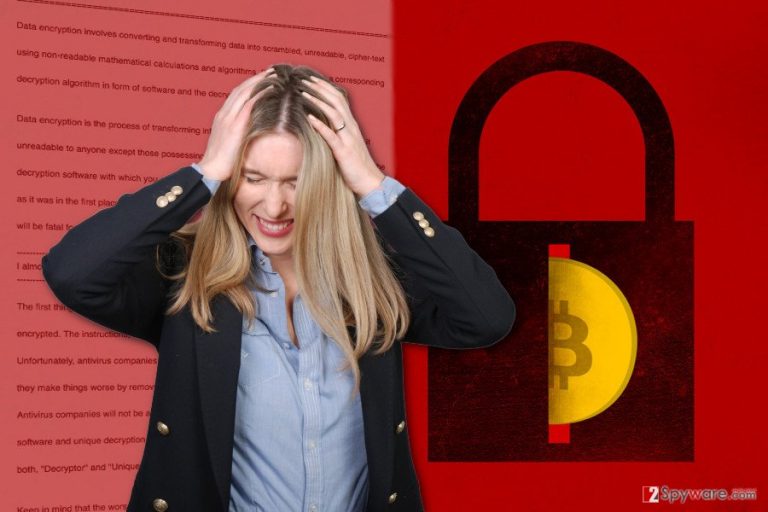
How can I get infected with ransomware?
The first attacks of the Nhtnwcuf ransomware have been spotted on servers. It seems the virus uses brute force attack using Remote Desktop Protocol (RDP).[2] However, it’s doubtful that developers of the virus limit themselves only to one distribution method. It is possible that the virus also spreads via malicious email attachments, malware-laden ads, bogus software updates and downloads, exploit kits, etc.[3] However, we want to remind you to be careful with emails and do not rush opening them. Also, stay away from the strange online ads even if they are delivered on the legitimate websites[4] – they might include malware as well. What is more, be careful when installing software and updates. Torrents, file-sharing websites[5] or ads are potentially dangerous channels for software installation. Lastly, keep all your programs updated because Nhtnwcuf malware or other ransomware might be capable of using these vulnerabilities to launch the successful attack on your PC.
Nhtnwcuf removal procedure
The only safe way to remove Nhtnwcuf from the system without causing more problems is employing professional malware removal tools. We highly recommend choosing FortectIntego, Malwarebytes or SpyHunter 5Combo Cleaner for this task. All these programs are capable of eliminating the malware from the system and protecting from other cyber threats in the future. However, the virus might prevent you from installing security tools. In this case, have a look at our prepared instructions below and learn how to disable the virus. Then, you will be able to install anti-malware program and perform the Nhtnwcuf removal. Finally, it might be impossible to restore your files; however, we have prepared three alternative methods that might help to rescue at least some of your files. You will find them at the end of the article.
Getting rid of Nhtnwcuf virus. Follow these steps
Manual removal using Safe Mode
If Nhtnwcuf ransomware prevents you from installing malware removal tools, please follow the instructions below to reboot your PC to the Safe Mode with Networking. When in Safe Mode, try installing the program and scanning the system again.
Important! →
Manual removal guide might be too complicated for regular computer users. It requires advanced IT knowledge to be performed correctly (if vital system files are removed or damaged, it might result in full Windows compromise), and it also might take hours to complete. Therefore, we highly advise using the automatic method provided above instead.
Step 1. Access Safe Mode with Networking
Manual malware removal should be best performed in the Safe Mode environment.
Windows 7 / Vista / XP
- Click Start > Shutdown > Restart > OK.
- When your computer becomes active, start pressing F8 button (if that does not work, try F2, F12, Del, etc. – it all depends on your motherboard model) multiple times until you see the Advanced Boot Options window.
- Select Safe Mode with Networking from the list.
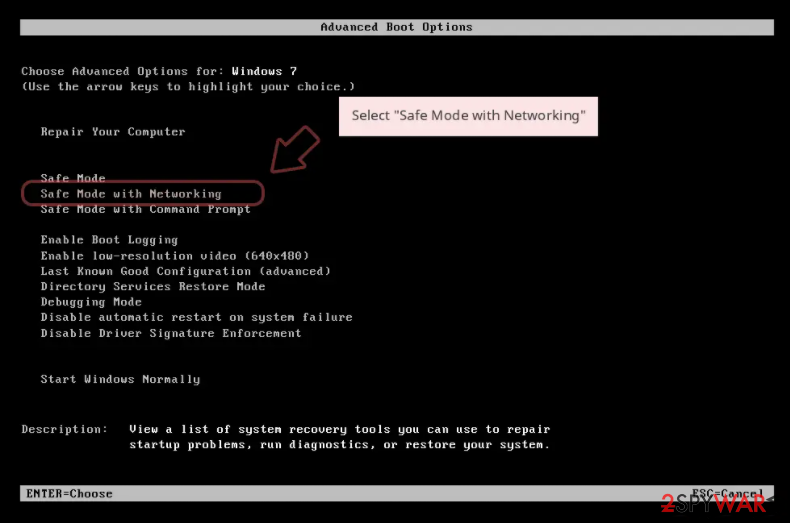
Windows 10 / Windows 8
- Right-click on Start button and select Settings.
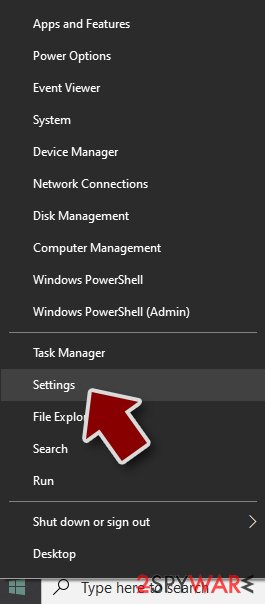
- Scroll down to pick Update & Security.
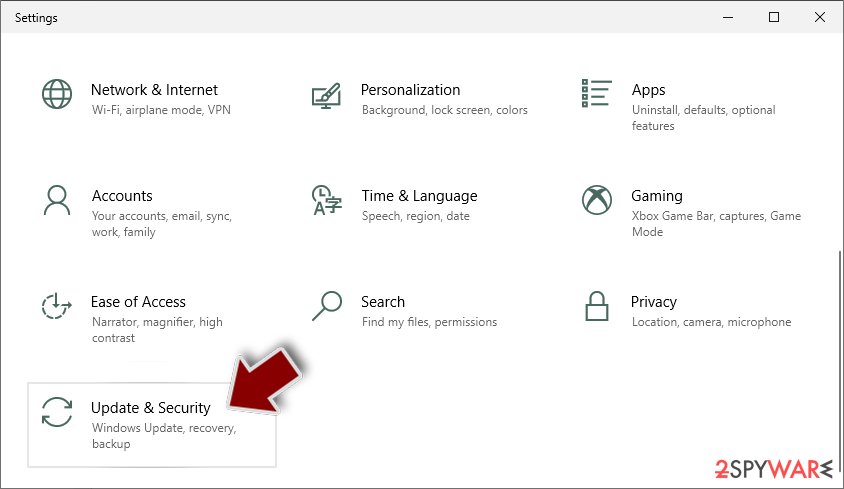
- On the left side of the window, pick Recovery.
- Now scroll down to find Advanced Startup section.
- Click Restart now.
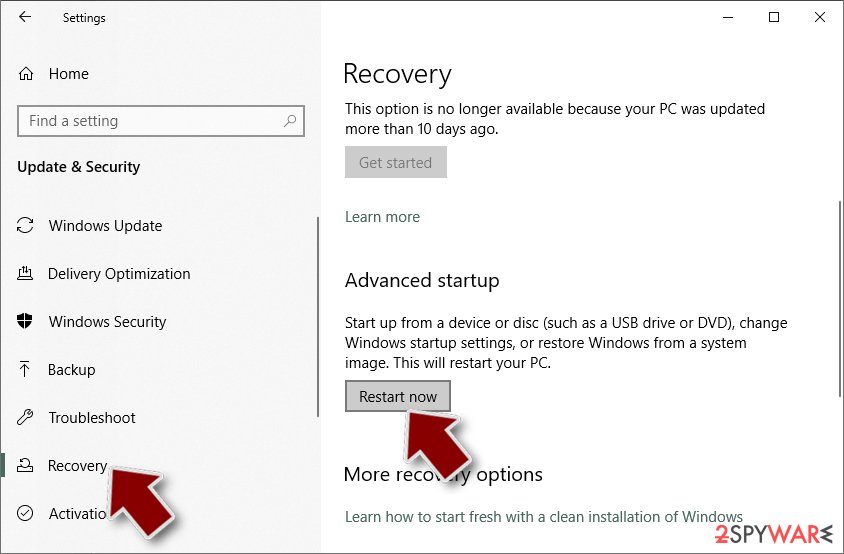
- Select Troubleshoot.
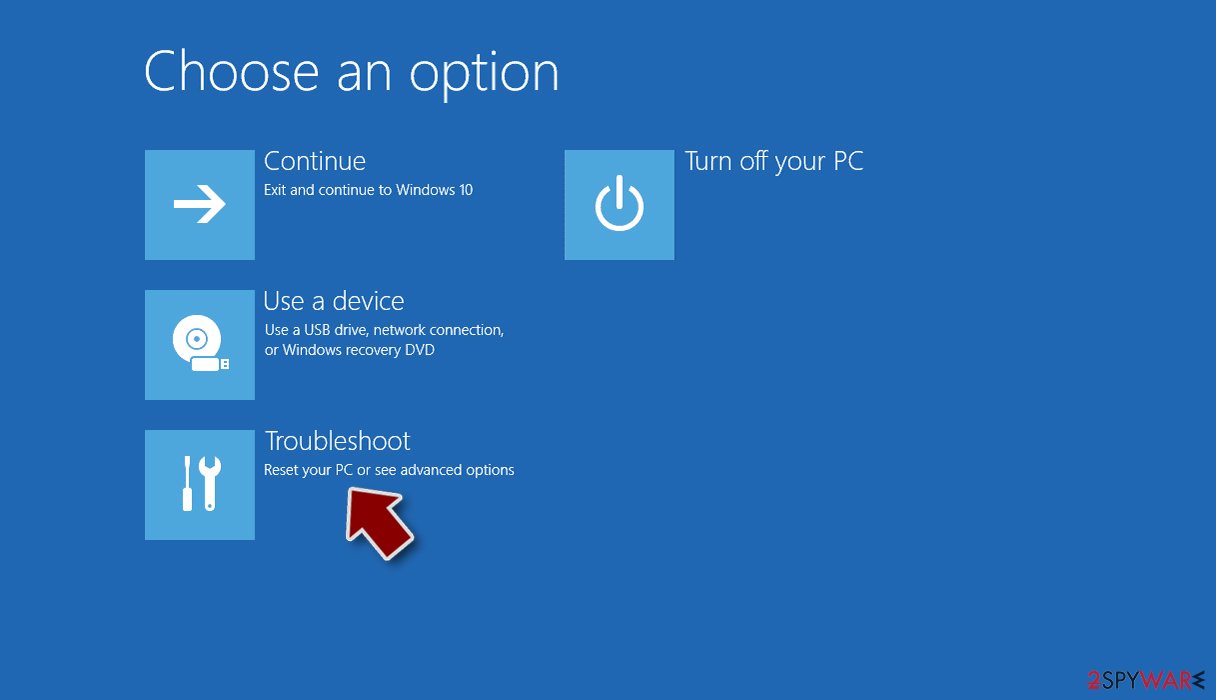
- Go to Advanced options.
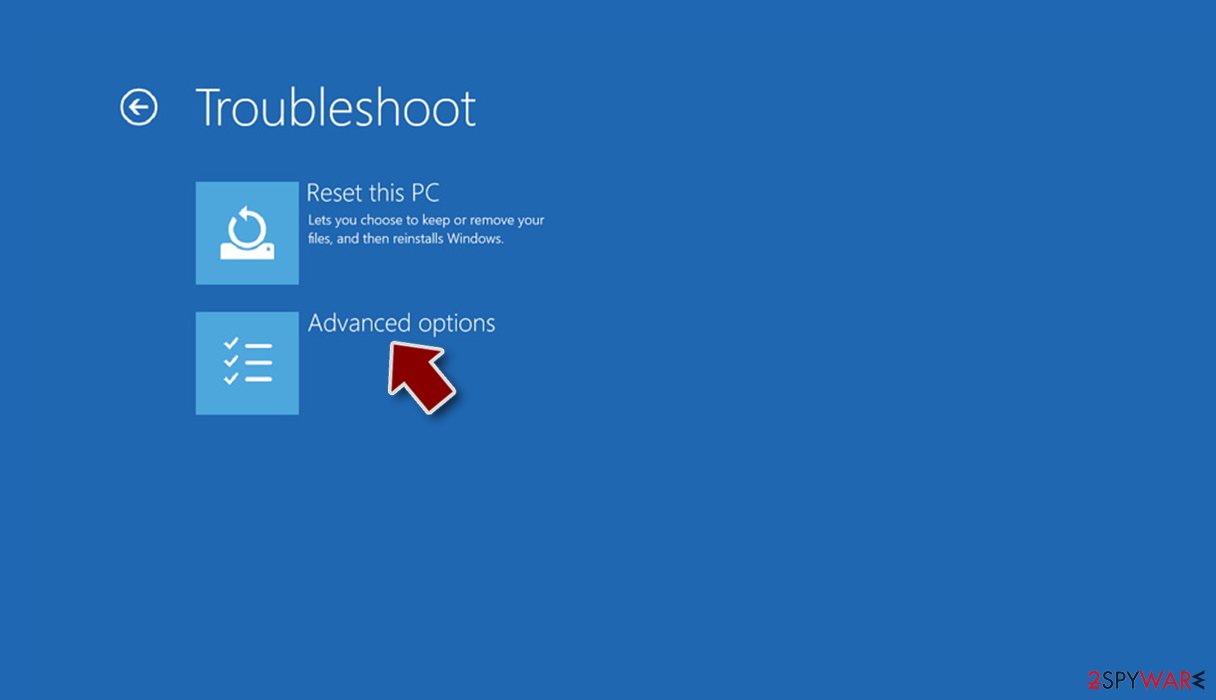
- Select Startup Settings.
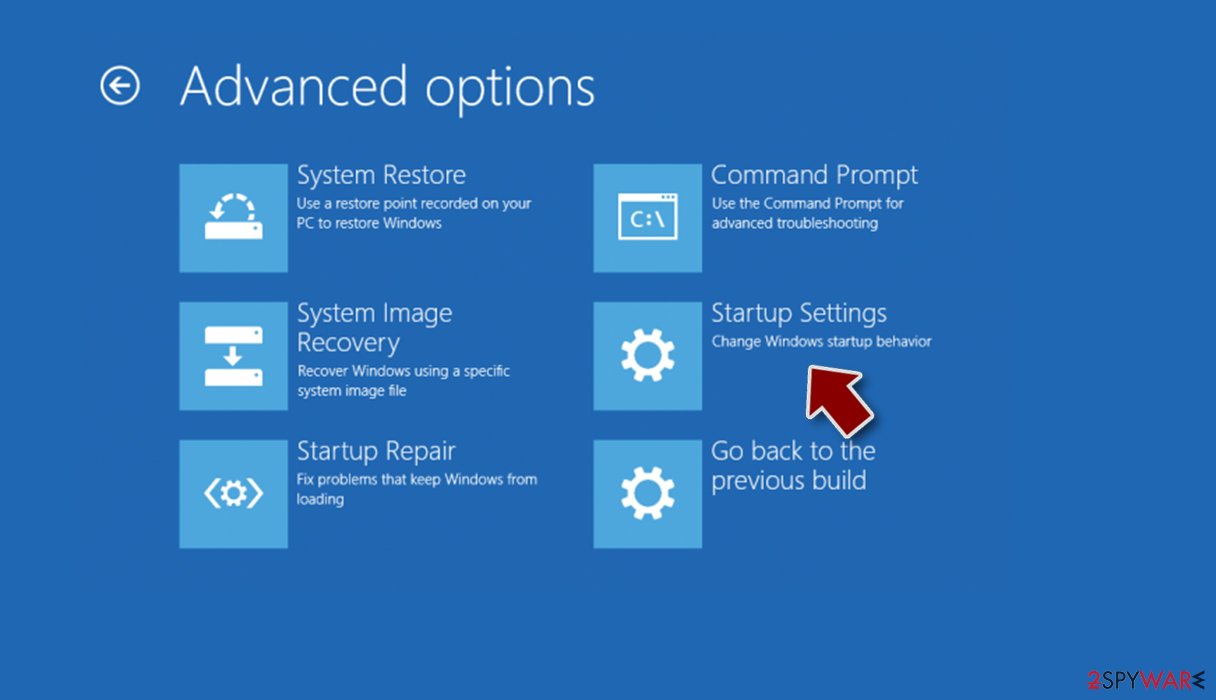
- Press Restart.
- Now press 5 or click 5) Enable Safe Mode with Networking.
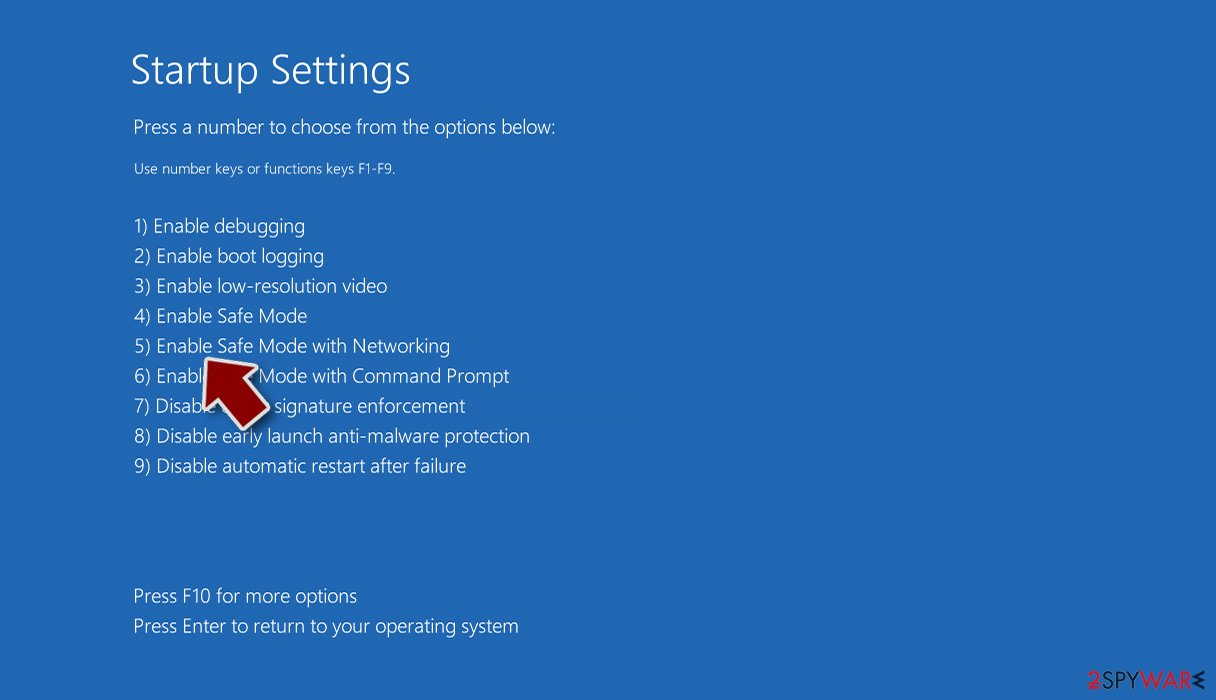
Step 2. Shut down suspicious processes
Windows Task Manager is a useful tool that shows all the processes running in the background. If malware is running a process, you need to shut it down:
- Press Ctrl + Shift + Esc on your keyboard to open Windows Task Manager.
- Click on More details.
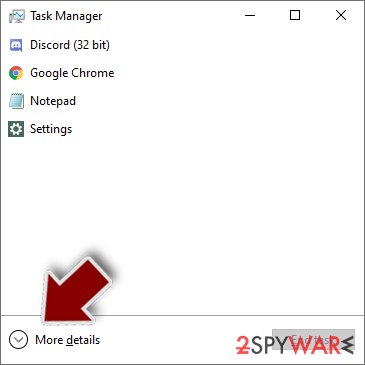
- Scroll down to Background processes section, and look for anything suspicious.
- Right-click and select Open file location.
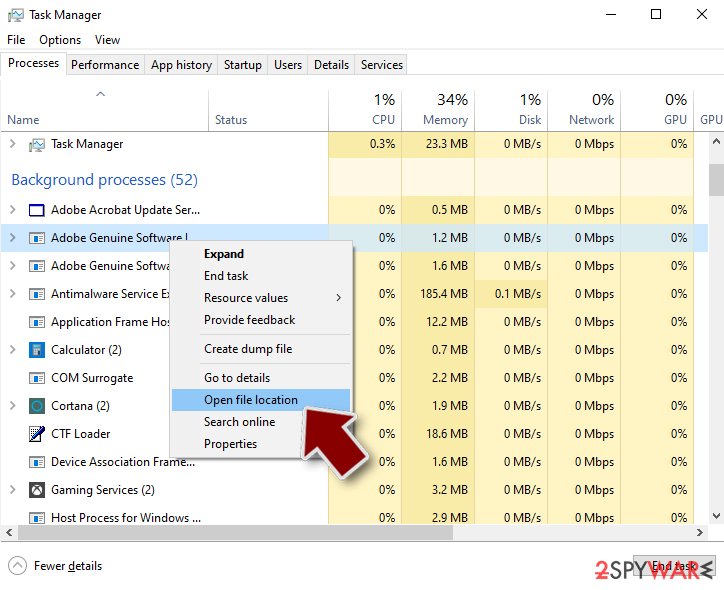
- Go back to the process, right-click and pick End Task.
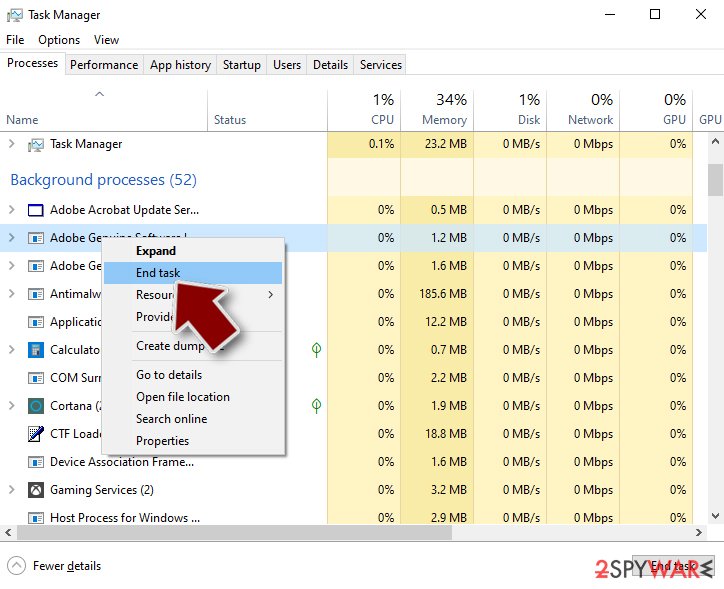
- Delete the contents of the malicious folder.
Step 3. Check program Startup
- Press Ctrl + Shift + Esc on your keyboard to open Windows Task Manager.
- Go to Startup tab.
- Right-click on the suspicious program and pick Disable.
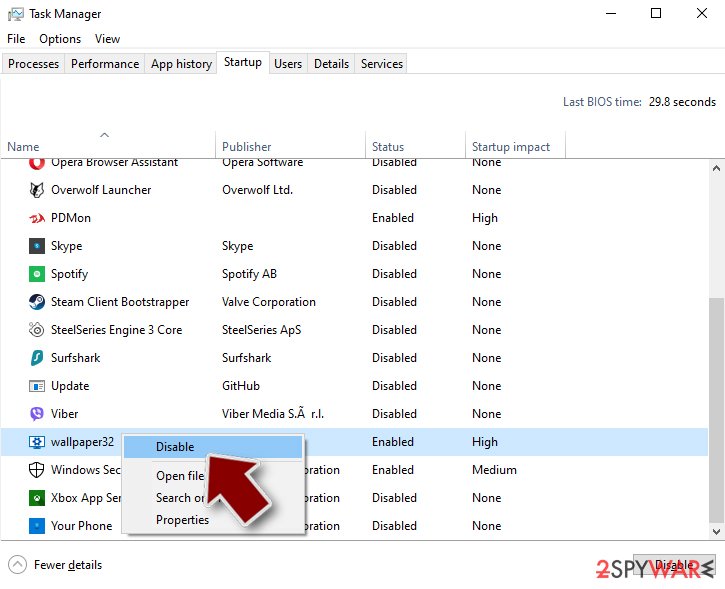
Step 4. Delete virus files
Malware-related files can be found in various places within your computer. Here are instructions that could help you find them:
- Type in Disk Cleanup in Windows search and press Enter.
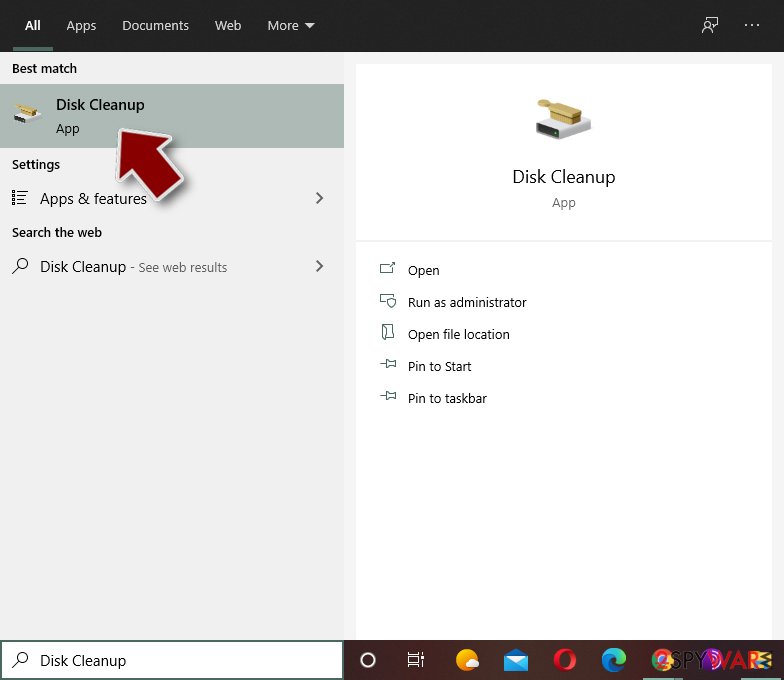
- Select the drive you want to clean (C: is your main drive by default and is likely to be the one that has malicious files in).
- Scroll through the Files to delete list and select the following:
Temporary Internet Files
Downloads
Recycle Bin
Temporary files - Pick Clean up system files.
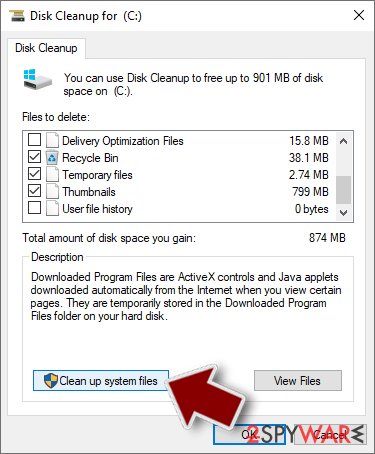
- You can also look for other malicious files hidden in the following folders (type these entries in Windows Search and press Enter):
%AppData%
%LocalAppData%
%ProgramData%
%WinDir%
After you are finished, reboot the PC in normal mode.
Remove Nhtnwcuf using System Restore
If the previous method hasn’t helped you to perform automatic Nhtnwcuf removal, try this option. Once you reboot your PC, try installing an anti-malware program or scanning the system.
-
Step 1: Reboot your computer to Safe Mode with Command Prompt
Windows 7 / Vista / XP- Click Start → Shutdown → Restart → OK.
- When your computer becomes active, start pressing F8 multiple times until you see the Advanced Boot Options window.
-
Select Command Prompt from the list

Windows 10 / Windows 8- Press the Power button at the Windows login screen. Now press and hold Shift, which is on your keyboard, and click Restart..
- Now select Troubleshoot → Advanced options → Startup Settings and finally press Restart.
-
Once your computer becomes active, select Enable Safe Mode with Command Prompt in Startup Settings window.

-
Step 2: Restore your system files and settings
-
Once the Command Prompt window shows up, enter cd restore and click Enter.

-
Now type rstrui.exe and press Enter again..

-
When a new window shows up, click Next and select your restore point that is prior the infiltration of Nhtnwcuf. After doing that, click Next.


-
Now click Yes to start system restore.

-
Once the Command Prompt window shows up, enter cd restore and click Enter.
Bonus: Recover your data
Guide which is presented above is supposed to help you remove Nhtnwcuf from your computer. To recover your encrypted files, we recommend using a detailed guide prepared by 2-spyware.com security experts.If you do not have data backups, your chances to restore your files are very low. However, we suggest trying these three methods presented below. Maybe, they will helps you to bring back at least some of the lost files.
If your files are encrypted by Nhtnwcuf, you can use several methods to restore them:
Try Data Recovery Pro to restore files encrypted by Nhtnwcuf virus
Data Recovery Pro tool has already helped many victims of the ransomware to restore their files. Hopefully, this tool help you too.
- Download Data Recovery Pro;
- Follow the steps of Data Recovery Setup and install the program on your computer;
- Launch it and scan your computer for files encrypted by Nhtnwcuf ransomware;
- Restore them.
Try Windows Previous Versions feature to retrieve files encrypted by Nhtnwcuf ransomware
System Restore function allows “traveling back in time.” Thus, if you have activated this feature before Nhtnwcuf attack, you should try to follow these steps. Hopefully, you will manage to copy at least some of the necessary documents.
- Find an encrypted file you need to restore and right-click on it;
- Select “Properties” and go to “Previous versions” tab;
- Here, check each of available copies of the file in “Folder versions”. You should select the version you want to recover and click “Restore”.
Try ShadowExplorer to restore files encrypted by Nhtnwcuf ransomware virus
It is possible that the virus deleted Shadow Volume Copies of the targeted files. However, there’s also a chance that it failed to delete them for some reason. Thus, in this case, you can use ShadowExplorer to recover your files:
- Download Shadow Explorer (http://shadowexplorer.com/);
- Follow a Shadow Explorer Setup Wizard and install this application on your computer;
- Launch the program and go through the drop down menu on the top left corner to select the disk of your encrypted data. Check what folders are there;
- Right-click on the folder you want to restore and select “Export”. You can also select where you want it to be stored.
Nhtnwcuf decryptor
There’s no free and secure software that can help to decrypt files encrypted by Nhtnwcuf.
Finally, you should always think about the protection of crypto-ransomwares. In order to protect your computer from Nhtnwcuf and other ransomwares, use a reputable anti-spyware, such as FortectIntego, SpyHunter 5Combo Cleaner or Malwarebytes
How to prevent from getting ransomware
Access your website securely from any location
When you work on the domain, site, blog, or different project that requires constant management, content creation, or coding, you may need to connect to the server and content management service more often. The best solution for creating a tighter network could be a dedicated/fixed IP address.
If you make your IP address static and set to your device, you can connect to the CMS from any location and do not create any additional issues for the server or network manager that needs to monitor connections and activities. VPN software providers like Private Internet Access can help you with such settings and offer the option to control the online reputation and manage projects easily from any part of the world.
Recover files after data-affecting malware attacks
While much of the data can be accidentally deleted due to various reasons, malware is one of the main culprits that can cause loss of pictures, documents, videos, and other important files. More serious malware infections lead to significant data loss when your documents, system files, and images get encrypted. In particular, ransomware is is a type of malware that focuses on such functions, so your files become useless without an ability to access them.
Even though there is little to no possibility to recover after file-locking threats, some applications have features for data recovery in the system. In some cases, Data Recovery Pro can also help to recover at least some portion of your data after data-locking virus infection or general cyber infection.
- ^ What’s the Best Way to Back Up My Computer?. How-To Geek. Includes help, tutorials, tips and how-to guides for Windows and Linux.
- ^ Margaret Rouse. Remote Desktop Protocol (RDP). TechTarget. Includes tips, webcasts, and other advice in a variety of focused enterprise technology channels.
- ^ David Needle. Ransomware Heads List of 7 Most Dangerous New Cyber-Attack Techniques. eWEEK. Technology News, Tech Product Reviews, Research and and more.
- ^ Jeremy Kirk. Massive Malvertising Campaign Hits MSN, Yahoo. BankInfoSecurity. Bank information security news, training, education.
- ^ Erik Arvidson. Why File-sharing Networks Are Dangerous. Chron. Houston news, sports, entertainment, search and shopping from the online home of the Houston Chronicle.



